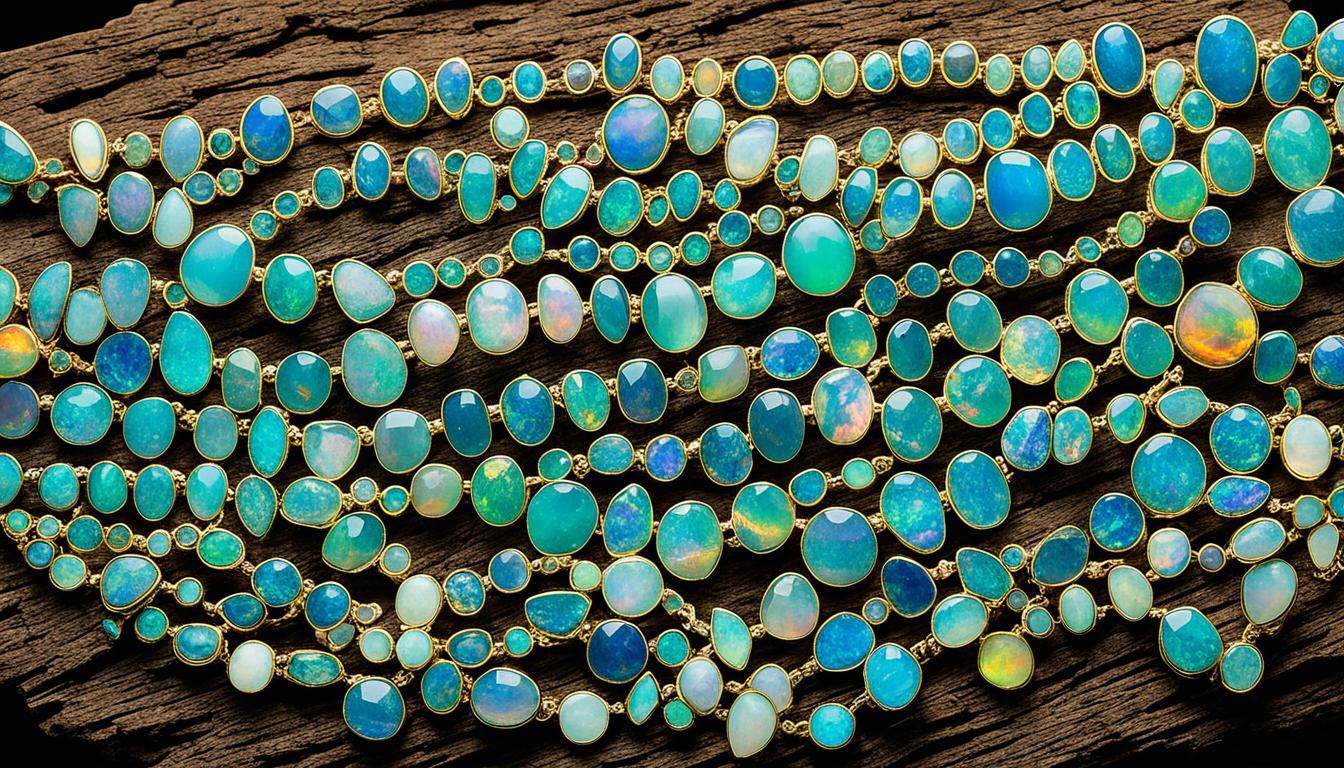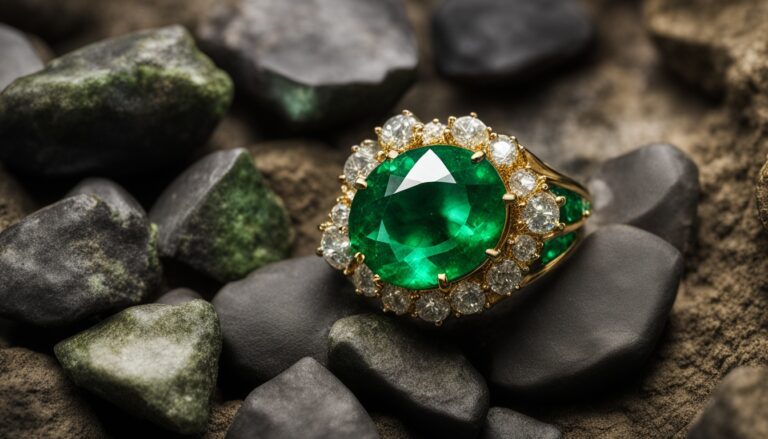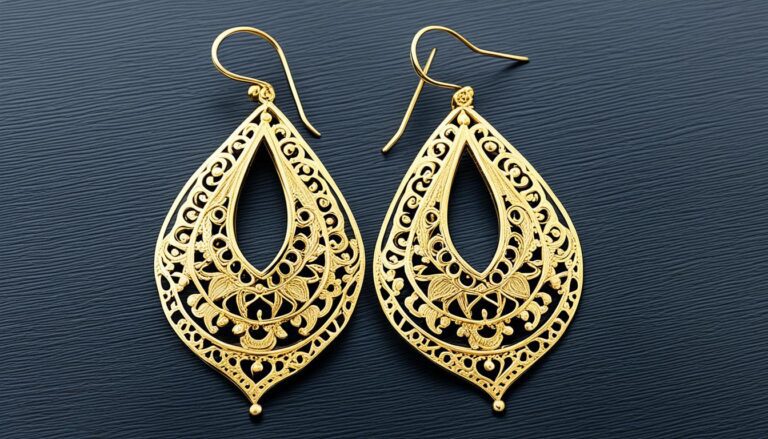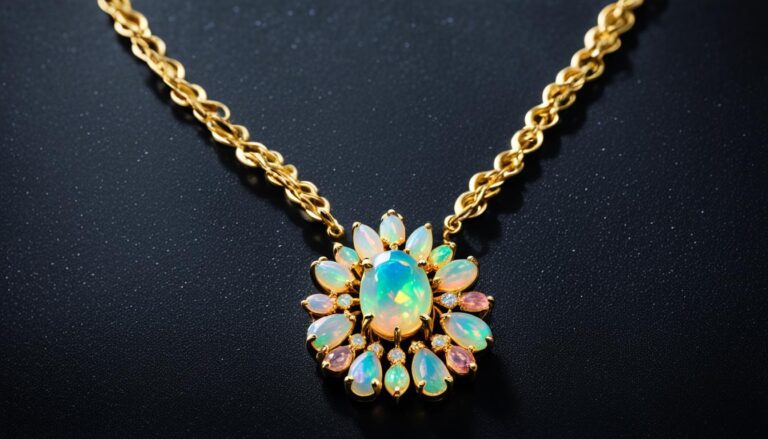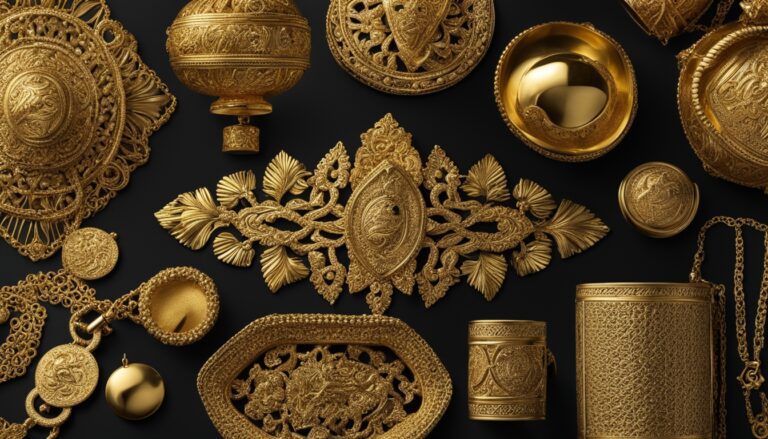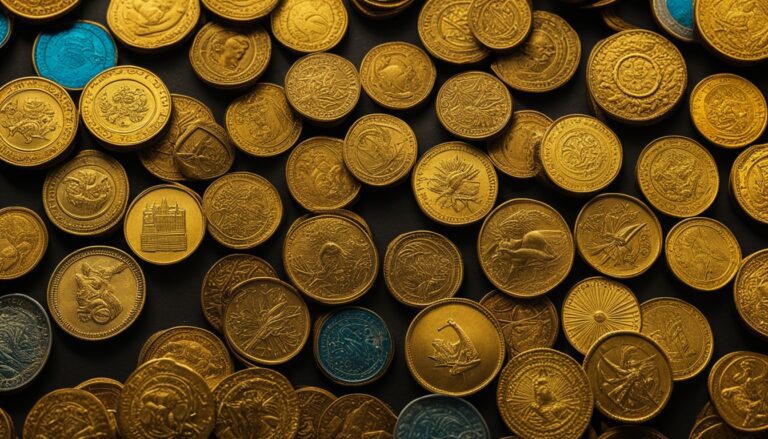How Old Are Ethiopian Opals
Welcome to our article on Ethiopian opals! Today, we’re going to explore the remarkable history of these gems. Ethiopian opals are special because they are both new and old in the opal world.
They were found again in the 1990s but might have been traded in East Africa since 4000 B.C. Yes, that’s thousands of years in the past! This long history makes Ethiopian opals mysterious and full of tradition, making them unlike other precious stones.
The Discovery of Ethiopian Opals
Ethiopian opals, celebrated for their enchanting beauty, were found in the 1990s. They lay along the steep volcanic cliffs next to the Great Rift Valley. However, these opals might have existed long before then. Archaeological finds hint that opals played a big part in East African trade around 4000 B.C.
Renowned archaeologist Louis Leakey found opal artifacts in Kenya from this ancient time. This discovery led experts to think these opals came from Ethiopia.
The excitement for Ethiopian opals doesn’t stop there.
Legend says the Queen of Sheba brought opals from Ethiopia to Jerusalem while visiting King Solomon. These opals, valued and admired across time, are now part of the modern opal world.
Finding Ethiopian opals in the 1990s changed the gemstone business a lot. The opals from Ethiopia surprised everyone with their bright colors and unique designs. This lifted Ethiopia into a key position in the opal mining scene.
Ethiopian Opal Mining Districts
Many important mining areas in Ethiopia make the world amazed with their opals. The Shewa Province is one of the first places that started sharing its opals. It’s famous for opals in colors like light yellows to deep browns.
The Welo Province soon after took the world’s attention. Near Wegel Tena, it’s known for opals with bright colors. You can find opals there that shine in reds, blues, and greens.
In 2013, a new opal spot appeared in the Wollo Province. This place is interesting for its gray and black opals. It’s made the Ethiopian opal world even more special.
Mining Districts and Opal Colors:
| Mining District | Opal Colors |
|---|---|
| Shewa Province | Transparent pale yellow to rich chocolatey brown |
| Welo Province | Vibrant range of colors, including reds, oranges, blues, and greens |
| Wollo Province | Dark gray and black opals |
These places all make different kinds of opals. You can choose opals from the mild tones of Shewa or the bright colors of Welo. Both are beautiful and perfect for jewelry.
Ethiopian Opal Characteristics
Ethiopian opals are very special. They have patterns and types you only find in Ethiopia.
They stand out because they mix common opal areas with precious opal. This mix creates patterns like snakeskin, leopard spots, or columns. Each opal becomes a unique piece of art because of these patterns.
Some Ethiopian opals show a cat’s eye effect. This happens because of other minerals inside the opal. The result is a beautiful play of light that looks like a cat’s eye.
Welo opals, the best-known Ethiopian opals, can be light yellow, white, or translucent. These colors are the base for a rainbow-like effect. When light hits the opal, it shows a stunning array of colors.
Ethiopian opals have truly unique patterns and effects. From the way they shine to their colors, they are a wonder.
Ethiopian Opals vs. Australian Opals
Australia has long led the way in opal production. It still makes most opals in the world. However, Ethiopian opals are becoming more popular. They might soon produce more opals than Australia does.
Ethiopian opals are more affordable than Australian ones. This is good news for those who love opals. The lower price means more people can own these beautiful stones without spending too much money.
Sometimes, Ethiopian opals are priced as high as Australian opals. It’s their unique features and colors that make them special. Even though they cost less, Ethiopian opals shine brightly with a wide range of colors. This makes them quite sought after in the gem market.
Ethiopian Opal Treatments
Ethiopian opals can get treatments to make their colors better or make them last longer. Dye treatment and smoke treatment are two ways to do this.
Dye treatment uses colored solutions to make the opals look better. This can change or make the colors brighter, catching your eye.
Smoke treatment is also used to improve opal colors. The opals get placed in smoke, making their colors deeper and stronger.
But, it’s easy to tell if an opal has been treated. You can see it under a microscope or by cutting into the opal. So, when you buy Ethiopian opals, make sure you’re told about any treatments.
Ethiopian Opal Hydrophane Property
Many Ethiopian opals have a special feature – they can soak up water. This sets them apart from other types of opals. But, it’s important for opal owners to be aware of this.
If they touch anything other than pure water, these opals might crack or change looks. So, it’s vital to be very careful with them. Avoid any liquids that could harm them.
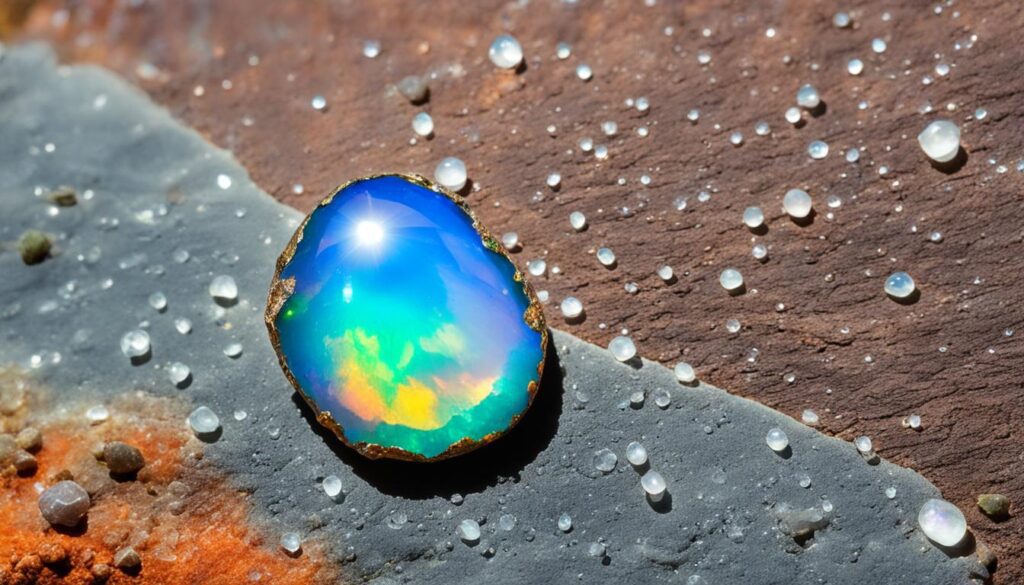
Even though hydrophane opals can absorb water, opals from Ethiopia’s Welo Province stand out. They come from places like Wegel Tena. These Ethiopian opals are tougher than Australian opals. They stay stable, even in tough environments.
For those who love opals, we suggest keeping hydrophane opals away from water. This helps keep them in great shape for a long time.
The Popularity of Ethiopian Opals
Recently, Ethiopian opals have become popular. They are now more available and cost less than before. This change has made opals more appealing to people around the world.
People are captivated by the unique beauty of Ethiopian opals. They love the special patterns they see. Plus, because they are not as expensive, more people can buy them.
Now, the market for Ethiopian opals is growing fast. Many places, like India, China, and the United States, are bringing in and selling these opals. This means you can find Ethiopian opals in various sizes and qualities easily.
Ethiopian Opals in Jewelry
Ethiopian opals are loved in the jewelry world for their special colors and patterns. They are a favorite among both designers and collectors because of this. Using Ethiopian opals in jewelry opens up a lot of creative options.
One way these opals are used is in the shape of beads. These beads vary in color and quality, from simple white opal to colorful ones. Because there are many types of Ethiopian opal beads, designers can make beautiful, colorful jewelry.
Opal Jewelry Designs
Designers use Ethiopian opals in rings, earrings, pendants, and bracelets. The colors in these opals make the jewelry stand out.
They often feature Ethiopian opals in the middle of rings and pendants. This way, the stone’s beauty shines brightly. Earrings with these opals look stunning and modern.
Ethiopian opals are great for any time, from everyday to special events. You can find them in everything from small necklaces to big, bold bracelets. This gemstone offers endless chances for making unique jewelry.
Ethiopian opals are truly special, so they are very popular in jewelry. People who love jewelry see the magic in these opals and add them to their collections.
The Future of Ethiopian Opals
The future of Ethiopian opals is looking bright. Ethiopia is now a big name in the opal world. It looks like they might outshine Australia in opal production soon. Thanks to their quality and more production, Ethiopian opals are getting more attention. This means more people can enjoy them in their collections.
The demand for opals keeps growing. This is great news for the Ethiopian opal business. Their unique colors and patterns have really caught people’s eyes. Buyers from all over love the way they shimmer like a rainbow or look like snake and leopard skin.
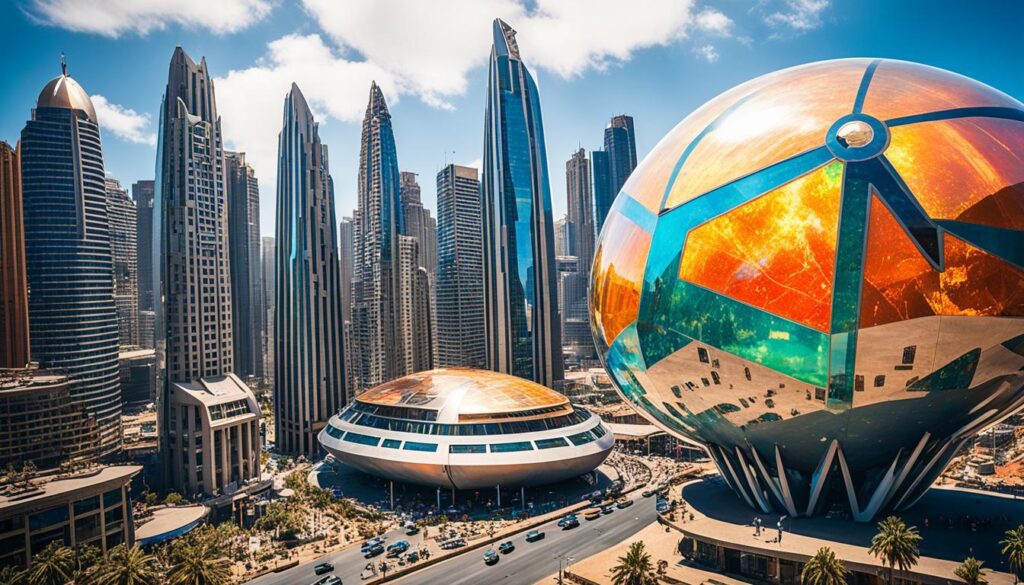
Ethiopia’s opal production is on the rise. It may soon be known as the world’s opal capital. The country has a lot of first-rate opals to keep up with the demand. This makes Ethiopian opals a favorite among collectors and designers.
With their growing popularity and unique beauty, Ethiopian opals have a bright future. They are becoming more affordable and easier to find. Ethiopia is becoming a major player in the opal world. It offers a new and diverse range of opals. This is exciting news for opal lovers everywhere.
Opal Legends and History
Opals have an interesting past, full of myths and stories, which have caught the eye of many over the years. Ethiopian opals, for instance, have ancient stories and ties to important figures in history.
Among these stories is one of the Queen of Sheba. She was known to wear opals when visiting King Solomon. It shows how precious opals were, for their beauty and believed abilities.
Throughout time, opals have kept their allure, valued for their changing colors and magical charm. These gems were thought to bring about luck, protect against evil, and boost creativity.
Nowadays, with Ethiopian opals, we can feel a part of this ancient tradition. Their colors and patterns hint at old stories, inviting us to enjoy their beauty and strength.
Folklore and Symbolism
Opals have always been seen as mystical and carry different meanings for various cultures. In ancient times, Romans linked opals with love and hope. Greeks believed they offered foresight and disease prevention.
In the Middle Ages, opals symbolized purity and hope, worn by women for protection and good luck. There was also a superstition connecting opals to bad luck for those not born in October. Yet today, they signal birth month pride for October.
Despite legends, opals still dazzle us with their unique color dances. They remain a gem of significant value, transcending time.
Conclusion
So, Ethiopian opals bring together ancient stories and today’s charm. Trade in East Africa shows opals have a long history. The 1990s discovery made Ethiopia a key figure in the opal world.
People love Ethiopian opals for their special colors and patterns. They shine in ways that remind you of snake scales or spots on leopards. Even though some worry about their care and how they’re treated, Ethiopian opals are gaining more fans.
Looking forward, Ethiopian opals will become even more important in the opal scene. They are easier to find and buy now. This has created new chances for people who collect or design jewelry. As more and more people want opals, the Ethiopian opal field is ready to grow. If you love collecting or wearing jewelry, Ethiopian opals are a great choice to add something special to your collection.

